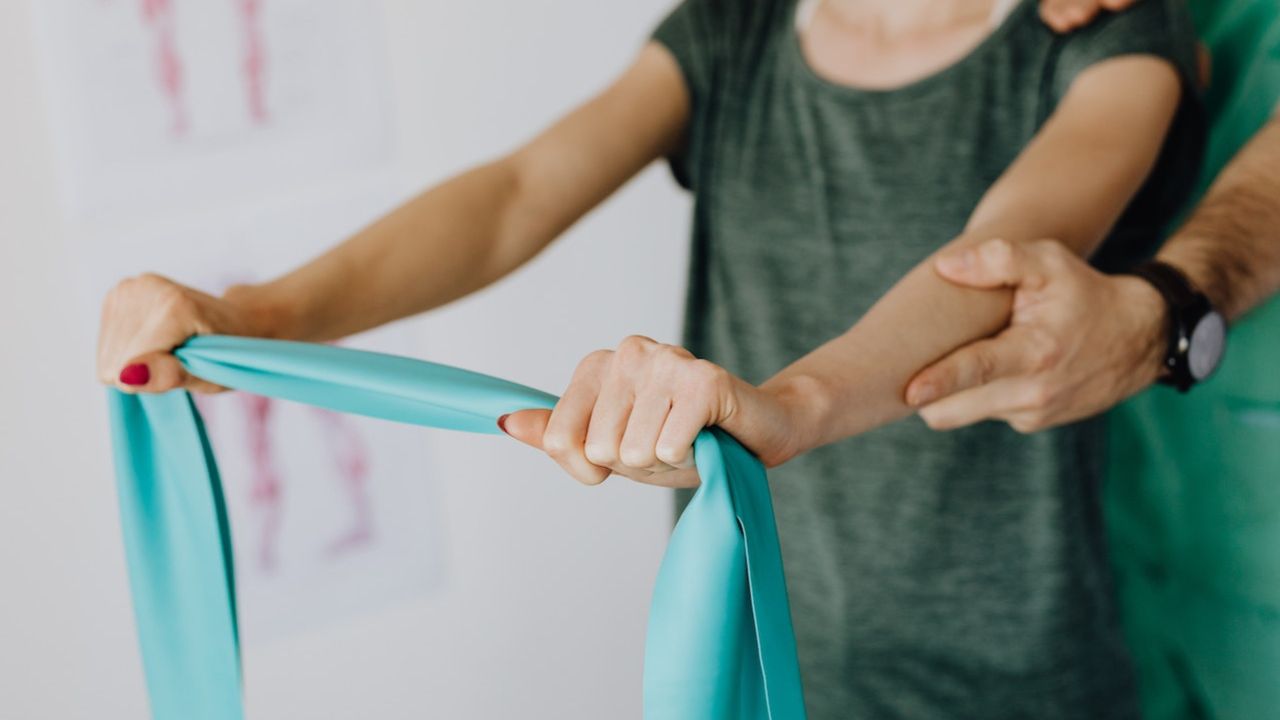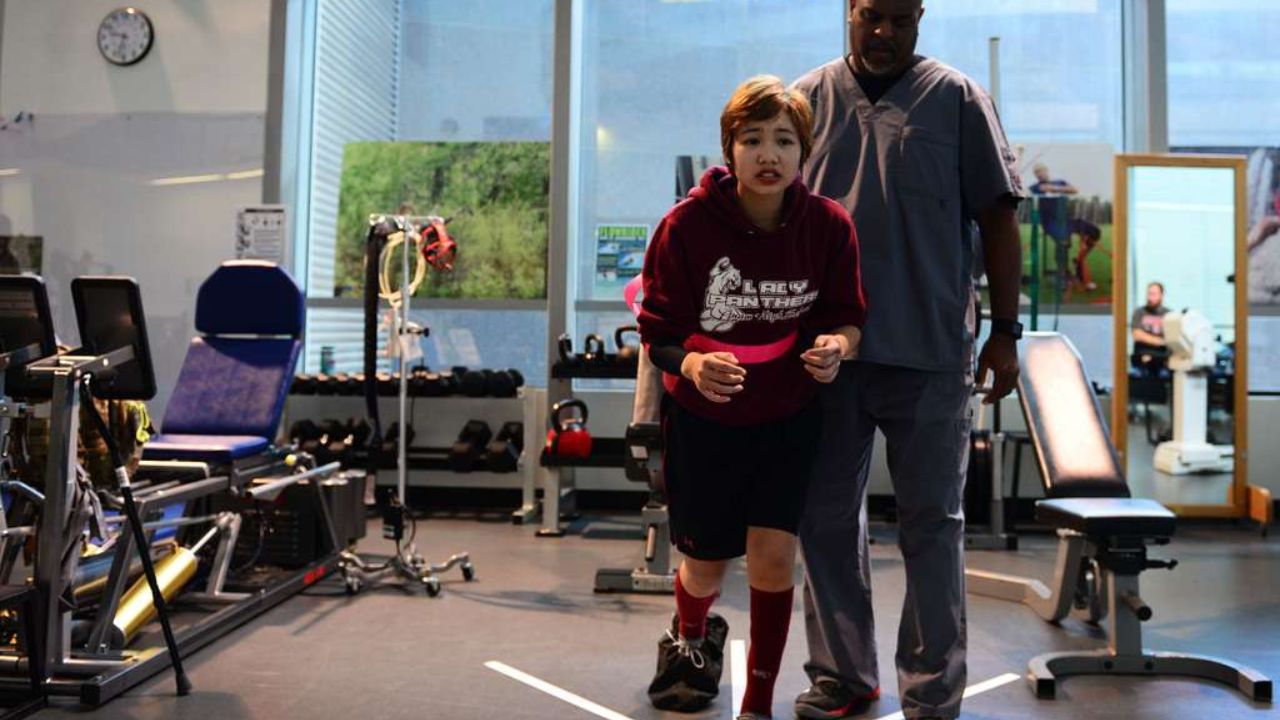
In the realm of sports rehabilitation, a comprehensive approach is necessary to promote optimal recovery and prevent future injuries.
This article explores the seven essential components of effective sports rehabilitation exercises, including:
- Muscle strengthening
- Neuromuscular control
- Core stabilization
- Flexibility training
- Plyometrics
- Proprioception training
- Functional training
By understanding the importance of each component and incorporating them into a rehabilitation program, athletes can enhance their performance, restore mobility, and minimize the risk of re-injury.
The Importance of Muscle Strengthening in Sports Rehabilitation
Muscle strengthening plays a crucial role in a successful sports rehabilitation program's effectiveness. The importance of resistance training and the role of strength training in rehabilitation cannot be understated.
When an athlete sustains an injury, the affected muscles often become weak and lose their ability to provide stability and support. By incorporating resistance training exercises into a rehabilitation program, these weakened muscles can be specifically targeted and strengthened. This helps to restore the athlete's overall strength and functionality, allowing them to return to their sport with reduced risk of re-injury.
Additionally, resistance training helps to improve muscle imbalances and correct any weaknesses that may have contributed to the initial injury. Overall, the inclusion of muscle strengthening exercises is essential in the successful rehabilitation of athletes, enabling them to regain their freedom on the field or court.
Enhancing Neuromuscular Control for Effective Rehabilitation
One key aspect of effective rehabilitation is the implementation of specific exercises designed to enhance an athlete's neuromuscular control and coordination.

Neuromuscular control techniques play a crucial role in rehabilitation exercises as they aim to improve the communication between the nervous system and muscles, ultimately enhancing an athlete's ability to perform functional movements with precision and control.
These techniques involve exercises that challenge an athlete's proprioceptive system, which is responsible for providing feedback about body position and movement. By incorporating balance and stability exercises, such as single-leg stands and balance boards, athletes can improve their proprioception and develop better control over their movements.
Additionally, exercises that focus on coordination and agility, such as ladder drills and cone drills, can further enhance an athlete's neuromuscular control.
Core Stabilization: Building a Strong Foundation for Recovery
As a critical component of effective sports rehabilitation, core stabilization plays a pivotal role in building a strong foundation for recovery. Building stability and core strength not only helps athletes regain their physical abilities but also enhances their overall performance.
Here are four key benefits of core stabilization exercises:
Improved balance and coordination: By strengthening the muscles in the core, athletes can better control their body movements and maintain balance during various athletic activities.
Enhanced injury prevention: A strong core helps to stabilize the spine and pelvis, reducing the risk of injuries such as strains, sprains, and lower back pain.

Increased power and efficiency: Core stability allows athletes to generate more power from their lower body and transfer it effectively to their upper body, resulting in improved performance.
Better posture and alignment: Strengthening the core muscles helps athletes maintain proper posture and alignment, reducing the risk of imbalances and postural dysfunctions.
Incorporating core stabilization exercises into sports rehabilitation programs is vital for athletes to regain their strength, prevent future injuries, and optimize their performance.
Flexibility Training: Restoring Range of Motion and Preventing Injury
Flexibility training is an essential aspect of sports rehabilitation, as it helps restore range of motion and prevent injuries. Restoring flexibility is crucial after an injury or during the recovery process, as it allows athletes to regain their full range of motion and perform at their best.
Flexibility training involves stretching exercises that target specific muscles and joints, helping to increase their elasticity and improve overall flexibility. By improving flexibility, athletes are able to move more freely and efficiently, reducing the risk of strains, sprains, and other injuries.
Additionally, flexibility training helps to improve muscle balance and posture, which further contributes to injury prevention. Incorporating regular flexibility training into a rehabilitation program is therefore vital for athletes looking to restore their range of motion and stay injury-free.
Power and Agility: The Role of Plyometrics in Rehabilitation
Two key factors in sports rehabilitation are power and agility. Plyometrics plays a crucial role in enhancing these aspects of athletic performance.

Plyometric exercises are explosive movements that involve rapid stretching and contracting of muscles. This results in increased power production and improved neuromuscular coordination.
Power training, which is a fundamental component of plyometrics, focuses on developing the ability to generate force quickly and efficiently.
Plyometrics can be used in rehabilitation to help athletes regain their power and agility after an injury. Some plyometric exercises commonly used in rehabilitation include box jumps, medicine ball throws, and depth jumps.
These exercises help athletes improve their ability to generate power, enhance their agility, and ultimately return to their sport with greater strength and performance.
Developing Proprioception for Improved Balance and Coordination
However, regularly incorporating proprioception training into a sports rehabilitation program can significantly improve balance and coordination. Proprioception exercises focus on enhancing the body's awareness of its position and movement in space, ultimately leading to better balance and coordination.
These exercises involve challenging the body's proprioceptive system through various movements and positions. Examples of proprioception exercises include single-leg stands, balance board activities, and stability ball exercises.
By engaging in these exercises, athletes can improve their ability to control movements and maintain stability, which is crucial in preventing injuries and enhancing performance.

Furthermore, balance training is an essential component of proprioception training. It involves exercises that challenge an individual's ability to maintain stability and control their body's position.
What role does functional training play in bridging the gap between rehabilitation and performance?
Functional training is a crucial component in bridging the gap between rehabilitation and performance. It focuses on enhancing an individual's ability to perform everyday tasks and sports-specific movements, ultimately improving overall performance. Here are four key ways in which functional training plays a significant role in this process:
Integration of movement patterns: Functional training helps individuals integrate multiple muscle groups and movement patterns, allowing them to move efficiently and effectively during rehabilitation and performance activities.
Specificity: By incorporating exercises that mimic the movements and demands of the desired activity, functional training helps individuals bridge the gap between rehabilitation and performance by improving their ability to perform those specific movements.
Progression: Functional training allows for progressive overload, gradually increasing the difficulty and intensity of exercises, leading to improved strength, stability, and overall performance.
Injury prevention: By addressing muscle imbalances, improving stability, and enhancing overall movement quality, functional training helps reduce the risk of future injuries, facilitating a seamless transition from rehabilitation to optimal performance.

Incorporating functional training techniques into rehabilitation programs can significantly enhance an individual's performance, making it a vital component in bridging the gap between rehabilitation and performance enhancement.
Frequently Asked Questions
How Long Does It Typically Take to See Results From Muscle Strengthening Exercises in Sports Rehabilitation?
It typically takes several weeks to months to see results from muscle strengthening exercises in sports rehabilitation. The benefits of core stabilization include improved posture, enhanced stability, and reduced risk of injuries.
Are There Any Specific Exercises That Should Be Avoided During Neuromuscular Control Training?
When considering specific exercises for neuromuscular control training in sports rehabilitation, it is important to be aware of contraindications, progression strategies, and equipment requirements. Avoid exercises that may exacerbate existing injuries or hinder progress.
Can Core Stabilization Exercises Be Beneficial for Individuals Who Are Not Involved in Sports or Physical Activities?
Core stabilization exercises can be highly beneficial for sedentary individuals, as they can improve posture, prevent back pain, and enhance overall stability. These exercises focus on strengthening the core muscles, which are essential for maintaining proper body alignment and functionality.
Is Flexibility Training Only Important for Athletes or Can It Benefit Individuals in Everyday Life as Well?
Flexibility training is not limited to athletes and can benefit sedentary individuals in everyday life. It improves joint range of motion, reduces muscle stiffness, and helps prevent injuries during daily activities, promoting overall physical well-being.
Are There Any Specific Precautions or Guidelines to Follow When Incorporating Plyometrics Into a Rehabilitation Program?
When incorporating plyometrics into a rehabilitation program, it is essential to follow specific precautions and guidelines. These may include starting with low-impact exercises, gradually increasing intensity, ensuring proper technique, and closely monitoring for any signs of pain or injury.
 Mobility trainingHome Fitness RecoverySports Injury PreventionPersonal Physical TherapyOrthopedic SolutionsPrivacy PolicyTerms And Conditions
Mobility trainingHome Fitness RecoverySports Injury PreventionPersonal Physical TherapyOrthopedic SolutionsPrivacy PolicyTerms And Conditions
